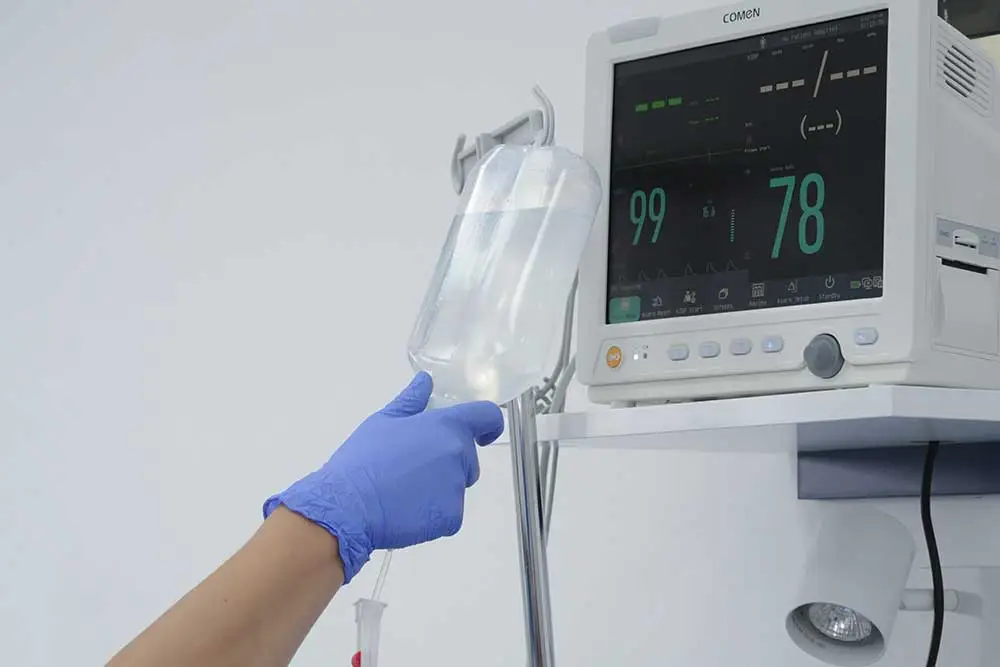A panic attack, or simply a panic attack (often mistakenly referred to as panic disorder, though they are not quite the same), is one of the most distressing experiences a person can go through. As a type of anxiety disorder, statistics show that an increasing number of people are struggling with this overwhelming condition. However, the good news is that panic attacks are treatable, and there are proven medical treatments available to manage and alleviate the disorder.
Nature of the Problem – How Everyday Life Contributes to Panic Attacks
Panic attacks are more prevalent today than ever before. It is estimated that over 13 percent of the world’s population will experience a panic attack at some point in their lives.
Everyday life imposes constant, rapid, and unpredictable changes on modern individuals, forcing them into a continuous cycle of adaptation and problem-solving. As a result, the modern way of life often leads to chronic stress, insecurity, and fear of an uncertain future. In other words, moments of complete relaxation, free from everyday pressures, have become increasingly rare.
Anxiety, in the form of panic attacks, can arise from the accumulation of stress, anxiety, and constant worry.
The buildup of stress—resulting from the fast-paced and demanding nature of modern life—is one of the biggest triggers for anxiety disorders. Feelings of worry, fear, and nervousness are natural and serve as the body’s way of preparing for potential threats. However, anxiety goes far beyond ordinary worry. It can become overwhelming, persistent, and irrational, triggering intense physical and emotional reactions, such as panic attacks, even in situations where no real danger exists.
In an anxious person, feelings of anxiety, apprehension, and fear are constant, persistent, and overwhelming, to the point that they interfere with everyday life. While fear is a natural protective mechanism, anxiety can be debilitating, restricting both physical and mental functions and leaving a person feeling trapped in despair and hopelessness. One of the most common anxiety-related conditions in this regard is a panic attack.
What are panic attacks? What are the symptoms of a panic attack? What does a panic attack look like? How can you overcome one? We answer these and similar questions in the following text.
What are panic attacks and how are they different from panic disorder?
Panic attacks, as we have seen, are a type of anxiety disorder. Defining them comprehensively can be challenging due to the contrast between their psychological and physical symptoms. In essence, a panic attack is the body’s physical response to an underlying psychological issue. Now, let’s break it down further.
A panic attack is a sudden episode of intense and overwhelming fear, triggering severe physical symptoms despite the absence of any real danger or obvious cause. It can be an extremely distressing experience, often making a person feel as though they are losing control, having a heart attack, or even dying.
Many people experience only one or two panic attacks in their lifetime, with the issue often resolving once the stressful situation has passed. This highlights how common panic attacks are within the general population. However, if a person suffers from recurrent and unexpected panic attacks and lives in constant fear of having another, this may indicate a condition known as panic disorder.
Although panic attacks are not life-threatening, they can be extremely distressing and have a significant impact on quality of life. If you’re wondering, “How can I overcome a panic attack?”, the good news is that effective treatments and strategies are available to manage this condition. But we’ll explore that in more detail later.
As we can see, panic attacks are not the same as panic disorder. A panic attack can happen to almost anyone, particularly during periods of extreme anxiety. In some cases, panic attacks may be a symptom of panic disorder. Panic disorder, on the other hand, is diagnosed when panic attacks are frequent, recurring, intense, and persistent, lasting for at least a month.
Therefore, experiencing a panic attack does not necessarily mean a person will develop panic disorder.

Panic Attacks and the "Fight or Flight" Response
A panic attack typically lasts anywhere from a few minutes to half an hour. During this time, a person may experience intense emotions such as helplessness and fear. Physically, common symptoms include a rapid heart rate, fast breathing, excessive sweating, and trembling.
Panic attacks often occur in specific situations that trigger heightened stress levels. However, as mentioned earlier, some people experience recurring panic attacks unexpectedly, without any clear triggers or external threats. In such cases, the condition may be diagnosed as panic disorder.
When discussing panic attacks, it’s important to highlight a psychological phenomenon known as the “fight or flight” response. During a panic attack, the brain signals the autonomic nervous system to activate this response, triggering a surge of chemicals, including adrenaline. This leads to various physiological changes, such as an increased heart rate, rapid breathing, and the redirection of blood to the muscles in preparation for “fight or flight”—which can often manifest as trembling or shaking.
For those experiencing a panic attack, these intense feelings can arise even when there is no real or perceived threat. In such cases, panic attacks and their symptoms occur when the “fight or flight” response is triggered, but there is no objective danger. In fact, panic attack symptoms can manifest in completely harmless and seemingly stress-free situations, such as watching TV or even while sleeping.
Panic Attacks and Triggers for the Fight-or-Flight Response
Several factors can cause the body to inappropriately trigger the fight or flight response, including:
- Chronic (long-term) stress: This leads to the production of excess stress hormones, such as adrenaline.
- Acute stress (e.g., experiencing a traumatic event): This can suddenly flood the body with large amounts of stress hormones like cortisol and adrenaline.
- Habitual hyperventilation: This disrupts the balance of gases in the blood, as there’s insufficient carbon dioxide present.
- Intense physical exercise: For some individuals, vigorous physical activity can trigger extreme reactions.
- Excessive caffeine intake: Caffeine, found in coffee, tea, and other beverages, is a powerful stimulant that can cause physical changes.
- Sudden environmental changes: This includes shifts into crowded, hot, or stuffy environments, which can trigger the response.
Panic Attacks and Their Causes
- Genetics: A family history of anxiety or panic disorders can increase the risk.
- High levels of stress: Chronic or intense stress can trigger panic attacks.
- Personality traits: Individuals who are more sensitive to stress or prone to negative emotions may be more susceptible.
- Changes in brain function: Alterations in the way certain parts of the brain function can play a role in the development of panic attacks.
Panic attacks may initially occur suddenly and without warning, but over time, they are typically triggered by specific situations.
The brain and nervous system play a crucial role in how a person responds to stress, anxiety, or fear. Scientists believe that dysfunction in the amygdala—the part of the brain responsible for regulating fear and other emotions—could be a primary cause of panic attacks. Additionally, chemical imbalances in substances such as gamma-aminobutyric acid (GABA), cortisol, and serotonin are thought to play a significant role in the development of panic attacks.
Risk Factors for Panic Attacks
Panic attack symptoms, as well as those of panic disorder, often begin in late adolescence or early adulthood, and they affect more women than men. Several factors can increase the risk of developing a panic attack or panic disorder, including:
- Family history of panic attacks or panic disorder (genetics): Anxiety disorders, including panic disorder, often run in families. The risk of developing panic attacks or panic disorder is 40% higher if a first-degree family member (parent, sibling) has the condition.
- Mental health conditions: Individuals with anxiety disorders, depression, or other mental health issues are more likely to experience panic attacks.
- Major life stress: Stressful events, such as the death or serious illness of a loved one, can increase the risk.
- Traumas and traumatic events: Experiences like sexual assault or serious accidents can trigger panic attacks.
- Significant life changes: Major transitions such as divorce, job loss, or moving to a new environment can act as risk factors.
- Smoking or excessive caffeine intake: Both smoking and excessive caffeine consumption can contribute to panic attacks.
- Unwanted childhood experiences: Certain traumatic events during childhood, particularly between the ages of 1 and 17, can increase the risk. This includes a history of physical and/or sexual abuse.
There is often no clear or specific trigger for a panic attack. However, individuals with phobias may experience certain triggers that lead to an extreme fear response, potentially resulting in a panic attack. For example, someone with trypanophobia (an intense fear of needles) may have a panic attack when faced with a blood test. Additionally, for some people, the fear of having a panic attack itself can be enough to trigger one.
It is important to note that one of the key criteria for diagnosing panic disorder is the absence of a known or consistent trigger for panic attacks.
What Are the Symptoms of a Panic Attack?
A panic attack typically occurs suddenly, without any prior warning or indication that it is about to happen. It can happen at any time—while driving, during sleep, in the middle of an important business meeting, or in other unexpected situations. Panic attacks can vary in how they present, but they usually peak within a few minutes before gradually subsiding.
After a panic attack subsides (usually within a few minutes), the person may feel drained and exhausted. Alongside a sudden surge of anxiety or fear, common symptoms of a panic attack may include:
- Shortness of breath and difficulty breathing normally
- Palpitations or a rapid heartbeat
- A pounding, stabbing, or tightening sensation in the chest
- Trembling or shaking
- Dry mouth
- A sense of losing control or “going mad”
- Derealisation – feeling detached from reality or as if the world is unreal
- Excessive sweating
- Nausea and dizziness
- Numbness, tingling, or pins and needles in the hands and feet
- Sudden feelings of being extremely hot or cold
- General muscle weakness, body fatigue, and disorientation
- Difficulty swallowing or a tight sensation in the throat
- A strong fear of dying or feeling convinced one is having a heart attack
- Fear of losing control or being unable to calm down
- Persistent fear of experiencing another panic attack
What Happens During a Panic Attack? A person experiencing a panic attack can become trapped in a vicious cycle of panic. This is why it is often said that panic can feel like it “goes around in circles.”
The intense fear felt during a panic attack can heighten anxiety, which in turn can worsen symptoms, prolong the attack, and make future attacks more likely. This escalation reinforces the cycle, making panic attacks feel even more overwhelming. Breaking this cycle is essential for reducing symptoms and regaining control. Later, we will explore how to overcome a panic attack effectively.
How Does a Panic Attack Occur?
As mentioned earlier, a panic attack typically happens suddenly and without warning, often appearing to occur spontaneously. However, certain analyses suggest that, in many cases, there is a heightened level of tension and anxiety leading up to the attack. This increased anxiety can be triggered by factors such as:
- Hunger
- Physical exertion
- Use of psychoactive substances
- The breakdown of a close interpersonal relationship (such as a breakup or the loss of a friendship)
Due to various external factors and constantly changing circumstances, the body’s physiological activity, alertness, and arousal levels fluctuate throughout the day. These natural variations affect heart rate, blood pressure, and breathing patterns. As a result, a person may experience physical sensations such as sharp pains in the chest, tingling in the limbs, trembling, a rapid heartbeat, tightness in the chest, and shortness of breath. These sensations can sometimes be misinterpreted as signs of a serious medical issue, which may further contribute to anxiety or even trigger a panic attack.
We all experience these sensations from time to time as a natural response of the body. However, when someone interprets them as a sign of imminent danger or disaster, it can trigger the cycle of fear known as a panic attack. This clearly demonstrates that panic attacks are a physiological response to psychological distress, where the body reacts as though there is a real threat, even when none exists.
In other words, when certain physical sensations occur—such as tingling, chest palpitations, sweating, and so on—the person experiencing a panic attack interprets these symptoms as signs of great danger. One of the first signs of a panic attack is hyperventilation, which involves rapid, shallow breathing. This leads to a disruption in the balance of oxygen in the blood, exacerbating the symptoms of the panic attack.
To clarify once again, experiencing a panic attack does not necessarily mean that a person will develop a panic disorder. When a person accurately interprets their symptoms, panic attacks can be prevented in the future. However, if someone experiences persistent anxiety, worry, and fear of future attacks, this may be a sign that they have developed panic disorder.
A Panic Attack and the Difference Between a Heart Attack and an Anxiety Attack
It is common for people to confuse a panic attack with a heart attack (myocardial infarction) or an anxiety attack. Let’s now clarify the conceptual differences between these three conditions.
1) Panic Attack and Heart Attack
As we’ve seen, the symptoms of a panic attack are primarily physical in nature. These symptoms can be so intense that a person may believe they are experiencing a heart attack. In fact, many people with panic disorder frequently visit doctors or emergency rooms, seeking treatment for what they believe is a life-threatening medical issue, when in reality, it is a panic attack.
Palpitations, rapid breathing, and a racing heartbeat are common symptoms of a panic attack. A person may interpret these symptoms as signs of a heart attack, even though they are not. However, it is crucial to medically assess and rule out the possibility that chest pain, an increased heart rate, or difficulty breathing could be indicative of a heart attack.
On the other hand, it is often overlooked that the symptoms mentioned—such as palpitations, rapid breathing, and a racing heartbeat—are not only not signs of a heart attack, but are actually the result of a panic attack.
2) Panic Attack and Anxiety Attack
People often use the terms “anxiety attack” and “panic attack” interchangeably, treating them as synonyms. However, these two terms refer to different conditions. The key difference is that in medical literature and in practice, anxiety attacks are not classified as a distinct mental condition.
In other words, there is no formal definition or diagnostic criteria for an anxiety attack. The term “anxiety attack” typically refers to accumulated anxiety that builds up over time due to ongoing stress or fears about future uncertainty.
Imagine you’ve been stressed all week due to work commitments, and now your emotions have reached a breaking point. During an anxiety attack, a person may feel as though they are “carrying the whole world on their shoulders.” In other words, they may experience tension, anxiety, irritability, restlessness, and a lack of focus, along with feelings of overwhelm and distress.
Panic attacks, on the other hand, are almost always sudden and spontaneous, often accompanied by symptoms such as derealization or a sense of impending doom. A panic attack typically subsides within a few minutes to half an hour. In contrast, an anxiety attack, though less intense, can last anywhere from minutes to several hours.

What Does a Panic Attack Look Like?
We’ve already seen what a panic attack looks like based on its symptoms. However, panic attack symptoms can vary from person to person. In other words, if you ask yourself, “what does a panic attack look like?”, the answer won’t be the same for everyone, as each person experiences it in their own unique way.
Basically, a panic attack is characterised by the presence of four or more of the following symptoms:
- Shortness of breath
- Rapid heartbeat
- Irregular heartbeats (arrhythmia)
- Sweating
- Weakness
- Dizziness and nausea
- Fainting
- Fear of having a heart attack or dying
A panic attack is not the same as ordinary fear. In fact, panic attacks are much more intense than the fear that we all experience from time to time. As we mentioned, a panic attack can happen at any time and in any place—whether you’re crossing the street, washing the dishes, or cleaning the house.
What a Panic Attack Looks Like: Marina's Story
To give you a clearer idea of what a panic attack looks like, let’s illustrate it through the story of Marina, a 40-year-old economist from Belgrade, who experienced a panic attack at her workplace.
Marina had her first panic attack seven months ago. She was in her office, preparing for an important business presentation, when suddenly, she was hit by an intense wave of fear. “The room started spinning”, and Marina felt as though she was about to be sick. Her entire body began to shake, she struggled to catch her breath, and her chest felt as though it was going to burst. She clung to the table throughout the episode until the panic attack subsided, but the experience left her deeply shaken.
Marina had her next panic attack just three weeks later, and since then, the attacks have become more frequent. She no longer knows when or where one will strike, and her greatest fear is that it will happen in public. As a result, Marina prefers staying at home after work instead of going out with friends. She also avoids taking the elevator to her office on the 6th floor, fearing that she could get trapped if a panic attack were to occur while inside.
A panic attack can be characterised by an intense and sudden fear, where the person feels helpless and unable to control the situation or their life. It can be described as a kind of false alarm, as there is no real danger, but the individual perceives it as if there is. This overwhelming feeling of impending doom occurs despite the absence of any actual threat, making it a distressing experience for those who suffer from it.
What happens when we have a panic attack?
As mentioned, not every panic attack is the same for every person, and its symptoms can vary. However, a panic attack is not an exaggerated or dramatic response; rather, it is a realistic reaction to an unrealistic danger. The body responds as if there is an immediate threat, even though, in reality, there is no danger present. This mismatch between the perceived danger and the actual situation is what makes a panic attack so confusing and distressing for the person experiencing it.
Therefore, panic attacks are not just something “in our head.” While it is true that a panic attack begins with certain thoughts, emotions, or mental states, it is strongly and intensely reflected in reality through the physical symptoms mentioned earlier, which should never be ignored. These physical symptoms are real and can be just as distressing as any other health condition, highlighting the importance of recognising and addressing them appropriately.
It’s also important to underline that a panic attack is not the same as a nervous breakdown. This distinction is crucial because many people mistakenly describe a panic attack as a form of nervous breakdown. Additionally, stressful life situations are often referred to as “nervous breakdowns.” However, a nervous breakdown typically results from prolonged and intense stress over time, whereas a panic attack is an intense, sudden reaction, and as such, it represents a form of acute stress.
A panic attack, and particularly panic disorder, can greatly impact a person’s daily life. This condition can lead to missed work, frequent medical appointments, and the avoidance of situations where a panic attack might occur.
Take agoraphobia as an example. It is a type of anxiety disorder where a person fears and avoids situations or places where they feel trapped, helpless, or unable to escape. Agoraphobia can sometimes coexist with panic disorder, leading to more frequent and intense panic attacks.
So, what happens during a panic attack?
Description of typical a panic attack
At the peak of a panic attack, a person may experience derealization, where their surroundings feel unreal or distorted. During this episode, they may also have an overwhelming fear of dying, suffering a heart attack, or feeling completely helpless.
Due to the rush of the stress hormone adrenaline, a panic attack can cause a rapid heartbeat, a stabbing or tight feeling in the chest, and breathing difficulties. The physical constriction of the throat may also make it difficult for the person to swallow, further intensifying the sense of breathlessness during the attack.
During a panic attack, a person experiences an overwhelming sense that something terrible or inevitable is about to happen, even though most people are aware that this is not the case. Dizziness and nausea often accompany the attack, causing the person to feel as though the room is spinning. Intense sweating, particularly on the palms or under the armpits, may also occur, followed by feelings of chills or hot flashes.
Panic attacks often involve severe and sudden headaches, which may dissipate quickly. Tremors or shaking of the entire body are also common symptoms. Additionally, a person may experience tingling, burning, or numbness in the hands or feet. This occurs because a panic attack triggers the “fight or flight” response, redirecting blood flow to the muscles and heart. As a result, the peripheral parts of the body, such as the hands and feet, receive less blood.
A panic attack typically occurs suddenly and reaches its peak within a few minutes, usually within 10 minutes. After this peak, the intensity of symptoms tends to decrease, and the person may start to feel better. Panic attacks rarely last longer than an hour, with most subsiding within 20-30 minutes.
How to overcome a panic attack?
How to overcome a panic attack and medical treatment
While there are methods you can use to manage a panic attack on your own, it is crucial to seek professional medical help after an episode. Medical treatment for panic attacks and panic disorder has been shown to be highly effective in overcoming this condition.
The medical approach to treating panic attacks and panic disorder involves two main methods: psychotherapy and pharmacological treatment (medication). In practice, combining both psychotherapy and medication has proven to be the most effective solution.
Psychotherapy is an effective psychological treatment for panic attacks and panic disorder. Through discussions and work with a psychotherapist or psychologist, the patient can gain an understanding of the root causes and triggers of their panic attacks. This allows them to regain control in response to these triggers (stressors). Even a brief session of psychotherapy can be beneficial in treating panic attacks.
Psychotherapy in this context includes cognitive-behavioural therapy, exposure therapy, educating the patient and their family about the disorder (bibliotherapy), and similar approaches.
Drug therapy involves the use of certain medications to alleviate the symptoms of a panic attack. These include:
- Benzodiazepines, such as Rivotril or Xanax;
- Antidepressants, such as selective serotonin reuptake inhibitors (SSRIs) like Seroxat or Zoloft;
- Antidepressants, such as selective noradrenaline reuptake inhibitors;
- Beta blockers

"MedTim Clinic – Overcome Panic Attacks for Good!"
MedTim Clinic is a modern facility specialising in the treatment of addiction, with an exceptional success rate even for the most severe cases. In addition, our team of highly skilled, experienced, and specialised doctors offers expert treatment for panic disorders and panic attacks.
A panic attack, although primarily a mental and psychological condition, also impacts the physical well-being of the patient. Therefore, the treatment of panic attacks and panic disorder at MedTim Clinic begins with a comprehensive psychiatric evaluation and psychodiagnostics. Based on the examination and diagnosis, we provide appropriate psycho-pharmacotherapy. This typically involves treatment with anxiolytics, beta blockers, and antidepressants that help restore normal serotonin levels.
After assessing the patient’s psycho-physical condition and establishing a tailored drug therapy plan, we work towards restoring control over their life and functionality. With our personalised approach, panic attacks become less frequent and less intense, helping the patient regain a sense of normalcy and well-being.
Panic Attack and Psychotherapy at the MedTim Clinic
At MedTim, we also incorporate psychotherapy into the treatment of panic attacks. Our psychologists and psychotherapists utilise a unique form of cognitive-behavioural therapy, which helps establish the connection between beliefs, thoughts, emotions, and actions. Through collaboration with our expert psychologists and other medical staff, patients learn to identify the early signs of a panic attack, enabling them to recognise these symptoms and respond appropriately.
In the treatment of panic attacks, we use patient education as well as exposure therapy. We gradually expose the patient to the triggers of their panic attacks, allowing them to realise that the fear is irrational and the perceived danger does not exist. This is a highly effective method, as it helps the patient to manage the disorder more quickly by adopting new behavioural patterns.
Psychotherapy at our clinic plays a crucial role in the treatment and recovery from panic attacks. Treatment for panic attacks at the MedTim clinic includes psychostabilisation, which involves inpatient care with intensive sessions with our psychiatrists and psychologists.
Even after discharge from the hospital, we maintain contact with the patient and their family, offering outpatient support. Psychotherapy and psychoeducation are key components of inpatient treatment at the MedTim clinic. For up to 12 months after leaving the hospital, we continue to provide outpatient care to ensure the patient’s panic attacks are resolved and disappear permanently.
Panic attacks are highly treatable when the patient seeks professional medical help promptly. If you or someone close to you is struggling with panic disorder, don’t hesitate to contact us and schedule a free consultation.
We are here to help you break free from panic attacks once and for all!



